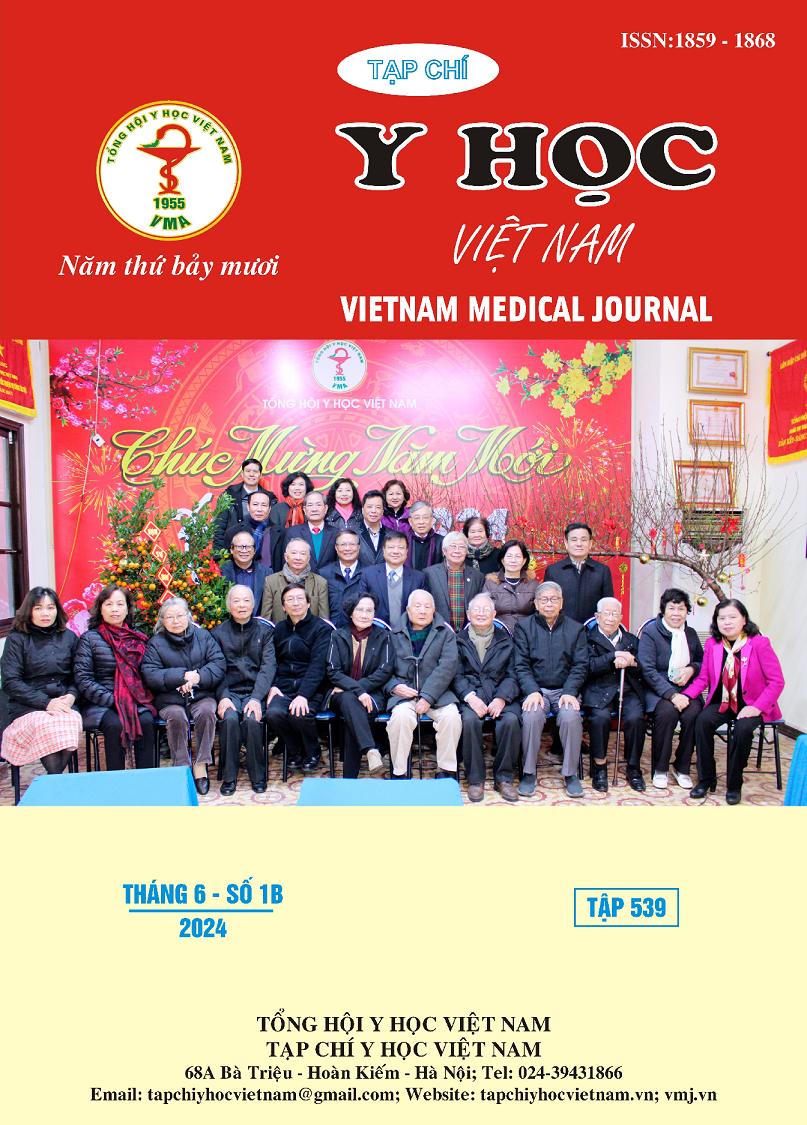GLYCATION GAP AND MICROALBUMINURIA AMONG NEWLY DIAGNOSED TYPE 2 DIABETES PATIENTS AT BAC LIEU GENERAL HOSPITAL
Main Article Content
Abstract
Background: Glycation reflects blood sugar levels. Glycation gaps have shown potential in predicting diabetic vascular complications. Objectives: This study estimated the Glycation gap, microalbuminuria rate, and identified associated factors in newly diagnosed type 2 diabetes patients at Bac Lieu General Hospital. Materials and methods: A cross-sectional study was conducted using total convenience sampling of 222 newly diagnosed type 2 diabetes patients from April 2023 to April 2024 at Bac Lieu General Hospital. Results: The study revealed an average Glycation gap of 0 ± 1.49 and a Microalbuminuria rate of 45.5%. Low HDL-c levels were associated with higher Glycation gap; HbA1c and serum Glucose showed a positive correlation, while Fructosamine showed an negative correlation with the Glycation gap. Hypertension, HbA1c ≥ 7%, and eGFR < 60 ml/min/1.73 m² were independently associated with Microalbuminuria. Conclusion: In newly diagnosed type 2 diabetes patients at Bac Lieu General Hospital, the Glycation gap was associated with HDL-c, HbA1c, serum Glucose and Fructosamine levels. Microalbuminuria was associated with hypertension, HbA1c levels, and eGFR. However, there was no association between the Glycation gap and Microalbuminuria.
Article Details
Keywords
Diabetes, HbA1c, Microalbumnin, Glycat gap, Microalbuminuria
References
2. Nayak A.U., Singh B.M., và Dunmore S.J. (2019). Potential Clinical Error Arising From Use of HbA1c in Diabetes: Effects of the Glycation Gap. Endocrine Reviews, 40(4), 988–999.
3. Trần Nam Q. (2021). Nghiên cứu Vi đạm niệu và các yếu tố nguy cơ liên quan ở bệnh nhân ĐTĐ típ 2 phát hiện lần đầu. Tạp chí Nội tiết đái tháo đường, 21.
4. Bộ Y tế (2020), Hướng dẫn Chẩn đoán và điều trị đái tháo đường típ 2 (Ban hành kèm theo Quyết định số 5481/QĐ-BYT ngày 30 tháng 12 năm 2020),.
5. American Diabetes Association (2020). Chronic Kidney Disease. Standards of Medical Care in Diabetesd, 135–151.
6. Bùi Hữu H., Đào Bùi Quý Q., và Lê Viết T. (2021). Khảo sát nồng độ protrin phản ứng C ở bệnh dái tháo đường type 2 có bệnh thận mạn. Tạp chí Y học Việt Nam, 503(2), 28–31.
7. Lê Q.T., Thành M.K., Nguyễn T.L. và cộng sự. (2022). Mối liên quan giữa khoảng trống Glycat hóa với biến chứng thận ở bệnh nhân đái tháo đường. Tạp chí Y học TPHCM, 26(1), 187–193.
8. Nguyễn V.T. và Ngô Đ.K. (2021). Microalbumin niệu và các yếu tố liên quan ở bệnh nhân đái tháo đường type II. VMJ, 500(1).
9. Bùi T.M.P., Nguyễn T.Đ., Trần N.Q. và cộng sự. (2022). Nhận xét mối liên quan giữa chỉ số sinh hóa máu với microalbumin nước tiểu ở bệnh nhân đái tháo đường type II tại bệnh viện Đại học Y Thái Bình. VMJ, 519(2).
10. Văn H.T., Trần T.B.D., và Nguyễn T.H.T. (2021). Tỷ lệ tăng albumin niệu và một số yếu tố liên quan ở bệnh nhân đái tháo đường type 2. Tạp chí Khoa học và Công nghệ Đại học Thái Nguyên, 49, 67–75.


